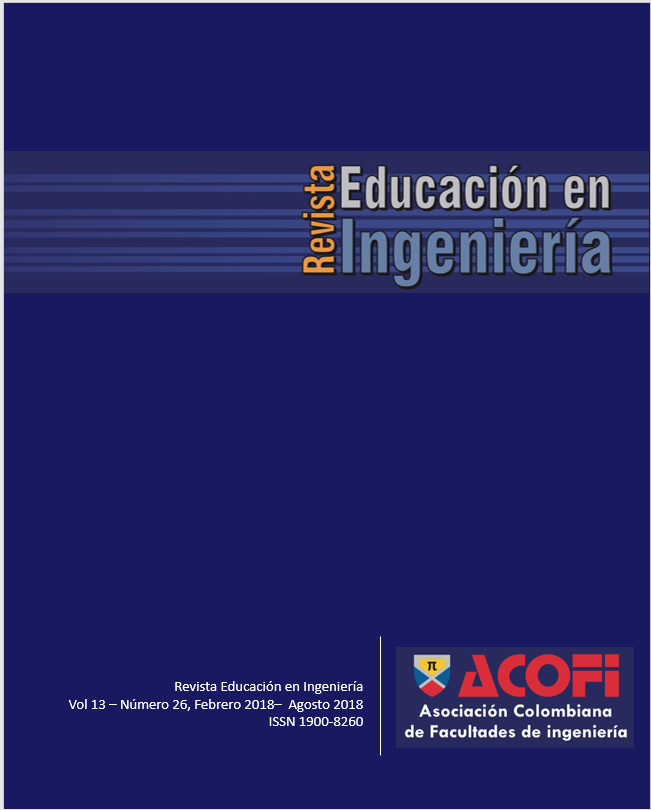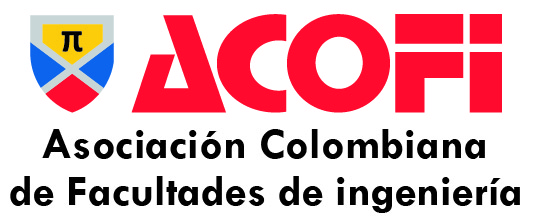Visualization, experimentation, and discussion: a strategy for teaching-learning of mechanics of materials
DOI:
https://doi.org/10.26507/rei.v13n26.896Keywords:
teaching, mechanics of materials, project based learning, engineering teachingAbstract
This paper presents a theoretical and practical methodology to improve the teaching-learning process of Mechanics of Materials. The methodology was used during six academic periods in the Civil Engineering Department of Universidad de Ibagué. It comprises three stages: observation of the phenomena, study of constitutive equations, and experimentation. In the first stage, students observe phenomena related to the topics of study, in the second stage, professor and students deepen into the theoretical conceptualization of the observed phenomena, deduce the mathematical equations of practical use for the phenomena, and solve implementation problems. In the third stage, students build mathematical and physical models as a course project. The methodology was implemented as an attempt to reduce the high levels of desertion and failure, and to contrast the traditional teaching methodology where the lecturer teacher is the center of the learning process. With the proposed methodology desertion decreased and students´ performance increased.Downloads
References
Mills, J.E. and Treagust, D.F., Engineering education—Is problem-based or project-based learning the answer?. Australasian Journal of Engineering Education, [online]. 3(2), 2003. Available at: http://www.academia.edu/download/31039433/Engineering_Education.pdf
Moore, T.J., Miller, R.L., Lesh, R.A., Stohlmann, M.S. and Kim, Y.R. Modeling in engineering: The role of representational fluency in students’ conceptual understanding. Journal of Engineering Education, 102(1), pp. 141-178. 2013. DOI: 10.1002/jee.20004
Burns, K.L. and Egelhoff, C.J., AC 2011-1261: A heuristic to aid teaching, learning, and problem-solving for mechanics of materials. American Society for Engineering Education. [online]. Available at: http://www.asee.org/file_server/papers/attachment/file/0001/1382/2011ASEE_Final_1261.pdf
Roylance, D., Jenkins, C. and Khanna, S., Innovations in teaching mechanics of materials in materials science and engineering departments. In Proceedings of the 2001 Spring Meeting of the American Society for Engineering Education, [online]. 2001, 4 P. Available at: http://www.web.mit.edu/roylance/www/ASEE_Albuquerque.pdf
Johnson, P.A., Problem-based, cooperative learning in the engineering classroom. Journal of Professional Issues in Engineering Education and Practice, 125(1), pp. 8-11, 1999.
Felder, R.M. and Silverman, L.K., Learning and teaching styles in engineering education. Engineering Education, 78(7), pp. 674-681, 1988.
Felder, R.M., Woods, D.R., Stice, J.E. and Rugarcia, A., The future of engineering education II. Teaching methods that work. Chemical Engineering Education, 34(1), pp. 26-39, 2000.
Gainsburg, J., The mathematical modeling of structural engineers. Mathematical Thinking and Learning, 8(1), pp. 3-36, 2006.
Hall, R. and Nemirovsky, R., Introduction to the special issue: Modalities of body engagement in mathematical activity and learning. Journal of the Learning Sciences, 21(2), pp. 207-215, 2011. DOI: 10.1080/10508406.2011.611447
Johri, A. and Olds, B.M., Situated engineering learning: bridging engineering education research and the learning sciences. Journal of Engineering Education, 100(1), pp. 151-185, 2011.
Nathan, M.J., Srisurichan, R., Walkington, C., Wolfgram, M., Williams, C. and Alibali, M.W., Building cohesion across representations: a mechanism for STEM integration. Journal of Engineering Education, 102(1), pp. 77-116, 2013. DOI: 10.1002/jee.20000
Crone, W.C., Using an advanced mechanics of materials design project to enhance learning in an introductory mechanics of materials course. Presented at the 2002 American Society for Engineering Education Annual Conference & Exposition, American Society for Engineering Education. [online]. 2002, Available at: http://mandm.engr.wisc.edu/faculty_pages/crone/PDF/ASEE_paper_2002_RevisedFINAL.pdf
Perrenet, J.C., Bouhuijs, P.A.J. and Smits, J., The suitability of problem-based learning for engineering education: theory and practice. Teaching in Higher Education, 5(3), pp. 345-358, 2000.
Hadgraft, R.G. and Young, W., Teaching Strategy. Department of Civil Engineering, Monash University, 1998.
Mahendran, M., Project-based civil engineering courses. Journal of Engineering Education, 84(1), pp. 75-79, 1995.
Tecno Tres A. (n.d.). Elastómeros. Available at: http://tecnologiaadi.blog.com/files/2013/06/Elast%C3%B3meros.pdf
Downloads
Additional Files
Published
How to Cite
Issue
Section
License
Total or partial reproduction of the documents published in the journal is authorized only when the source and author are cited.
| Article metrics | |
|---|---|
| Abstract views | |
| Galley vies | |
| PDF Views | |
| HTML views | |
| Other views | |









